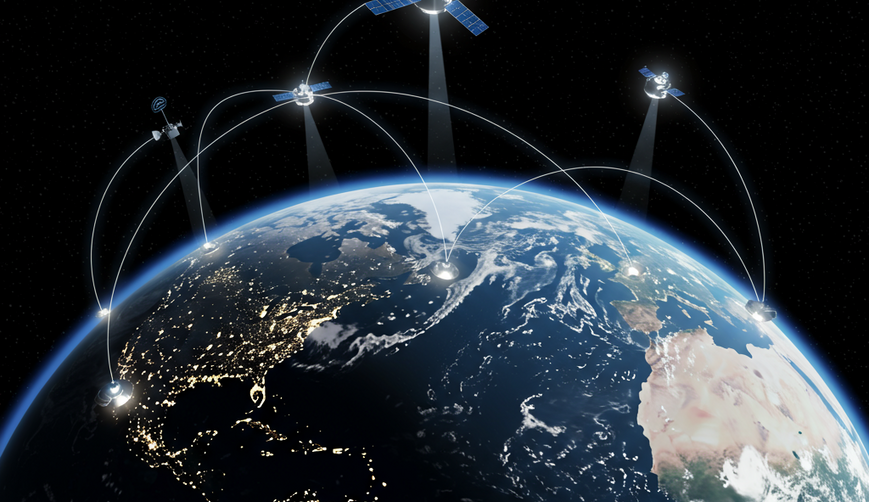Eyes in the Sky, Brains on the Ground: A New Era for Earth Observation
Large vision-language models (LVLMs) are transforming how we interpret the world, and their potential for analyzing Earth observation data is immense. Imagine near real-time insights into deforestation, urban sprawl, or the impact of natural disasters. However, getting these powerful AI models to work efficiently with the constant stream of data from orbiting satellites presents a unique set of challenges. It’s not quite as simple as just strapping a supercomputer to a rocket, you see.
The Data Download Dilemma
Low Earth orbit (LEO) satellites, while offering high-resolution imagery, whiz around the planet at quite a pace. This means their contact windows with ground stations are brief, making downloading massive amounts of image data a bottleneck. Think of it like trying to download a very large file with a temperamental dial-up connection – excruciatingly slow and prone to interruption. Add to that the sheer size of these images, and we have a real problem for timely analysis.
Introducing SpaceVerse: A Synergistic Approach
This is where SpaceVerse comes in – a clever system designed for efficient satellite-ground synergistic LVLM inference. The brilliance of SpaceVerse lies in its distributed approach. Compact, lightweight LVLMs are deployed directly on the satellites to handle initial, less complex tasks. This is a bit like having a smart scout up in space, making quick assessments and flagging the most important information.
Meanwhile, the heavy lifting, the more computationally intensive tasks, are reserved for the beefier LVLMs stationed on terra firma. These ground-based models receive only the essential, pre-processed data from the satellite, making the entire process far more streamlined. It’s a beautiful example of delegation – playing to the strengths of both satellite and ground-based systems.
Clever Computing and Communication Co-design
The secret sauce of SpaceVerse is a sophisticated framework combining a progressive confidence network and attention-based multi-scale preprocessing. This allows the system to intelligently identify which data is crucial for on-satellite processing and cleverly reduces data redundancy before transmission. This not only minimizes the amount of data sent back to Earth but also ensures that we’re prioritizing the most relevant information.
A Giant Leap for Earth Observation
Real-world tests of SpaceVerse on actual LEO satellite constellations and datasets have shown remarkable results: a 31.2% average gain in accuracy and a whopping 51.2% reduction in latency compared to existing methods. These improvements pave the way for a new era of near real-time Earth observation applications, from monitoring rapidly evolving natural disasters to tracking subtle environmental changes. And that, as they say, is rather a big deal.
The future of Earth observation is looking bright, thanks to the innovative approach of systems like SpaceVerse. By harnessing the combined power of AI and space technology, we’re not just taking pictures of our planet, we’re gaining a deeper understanding of its intricate workings and developing tools to protect it. It’s quite literally a game-changer, wouldn’t you say?




